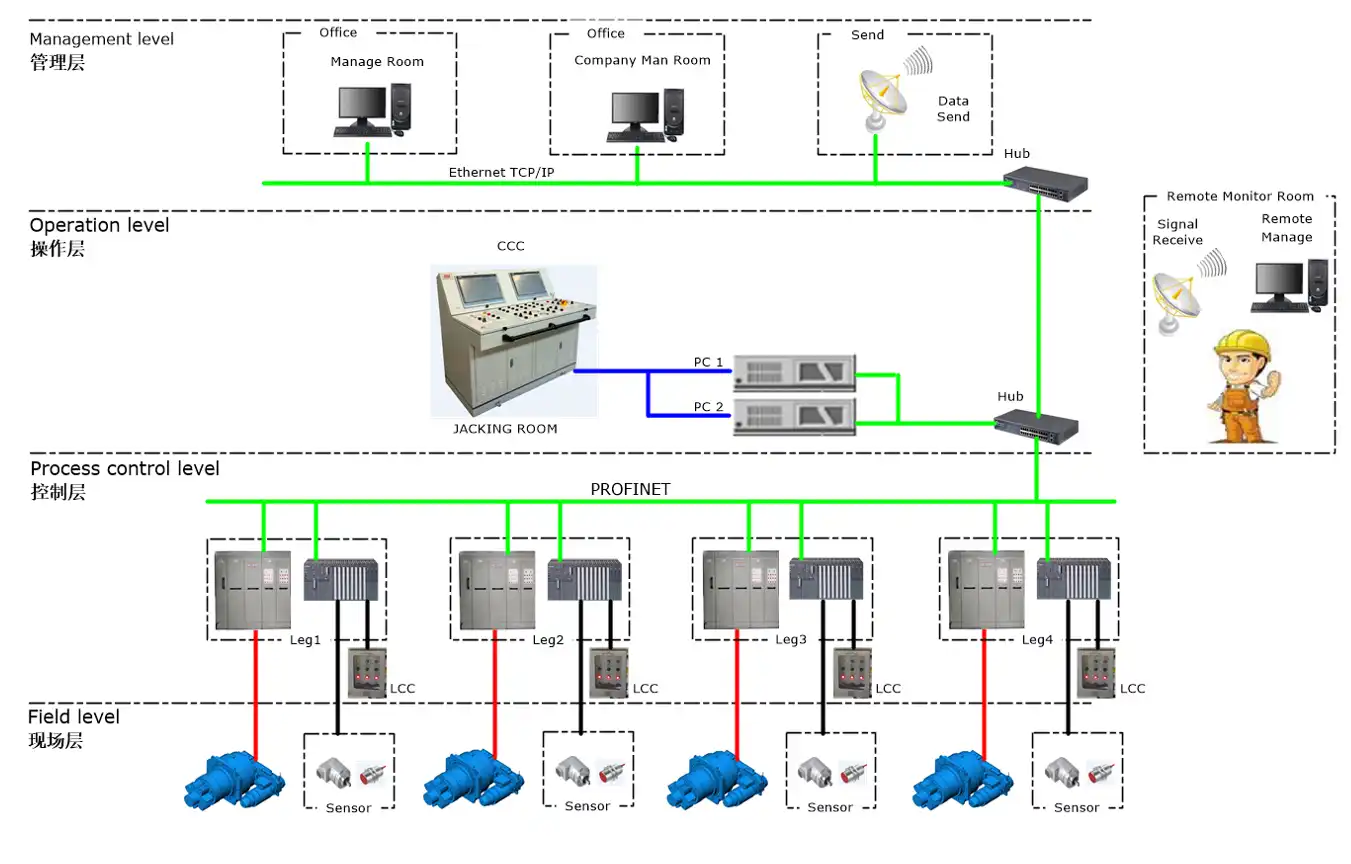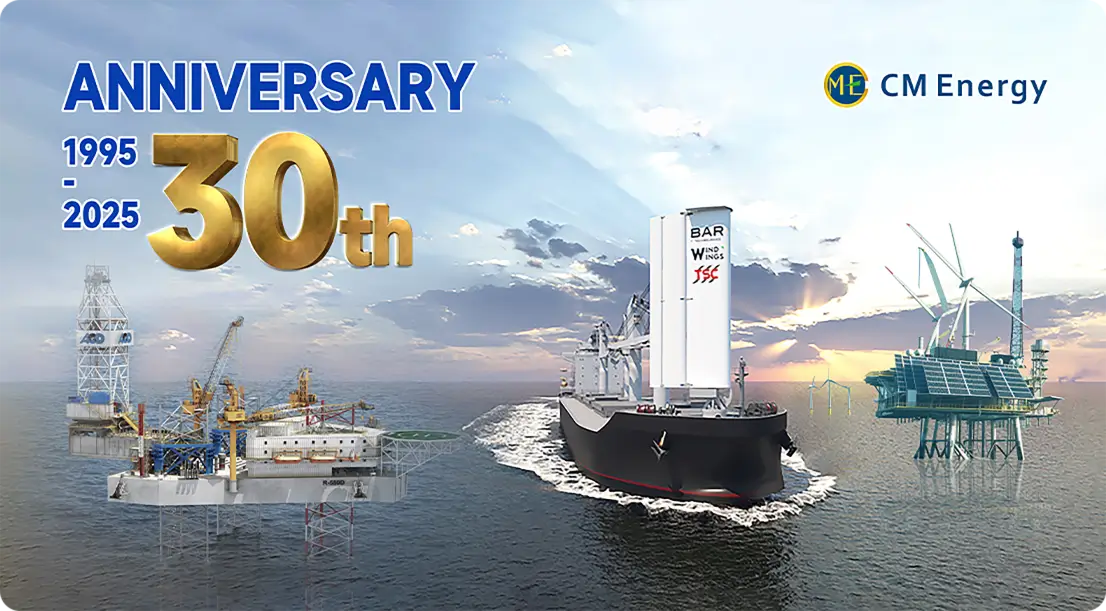Are jacking control systems customizable for different vessels?
Offshore Platform Jacking Control Systems are highly customizable to suit the unique requirements of various vessels. These sophisticated systems, crucial for the operation of self-elevating platforms, can be tailored to accommodate different vessel sizes, capacities, and specific operational needs. The customization of jacking control systems involves adjusting parameters such as load capacity, lifting speed, and control precision to match the vessel's specifications. This adaptability ensures optimal performance and safety across diverse maritime operations. As the offshore industry continues to evolve, the ability to customize these systems becomes increasingly vital, allowing vessel operators to maximize efficiency and adapt to changing project requirements.

Tailoring jacking systems to vessel size and capacity
When it comes to customizing offshore platform jacking control systems for different vessels, size and capacity are paramount considerations. The system must be precisely calibrated to handle the specific weight and dimensions of the vessel it's installed on.
Load distribution and structural integrity
For larger vessels, the jacking system needs to manage greater loads and ensure even distribution across multiple legs. This requires sophisticated load monitoring and balancing capabilities. Smaller vessels, on the other hand, may require more compact systems with a focus on precision control for stability in varying sea conditions.
Operational speed and power requirements
The jacking speed and power requirements vary significantly between vessel types. For instance, a wind turbine installation vessel might need rapid deployment capabilities, while an offshore accommodation platform may prioritize smooth, gradual elevation changes for passenger comfort.
Integration challenges with existing ship systems
Integrating a customized jacking control system with a vessel's existing infrastructure presents unique challenges that require careful consideration and expert implementation.
Compatibility with onboard power systems
One of the primary integration challenges is ensuring compatibility with the vessel's power generation and distribution systems. The offshore platform jacking control system must be designed to work seamlessly with the available power supply, which can vary greatly between vessels. This may involve custom power management solutions or the integration of dedicated power sources for the jacking system.
Interfacing with navigation and positioning systems
Modern vessels rely on sophisticated navigation and dynamic positioning systems. A customized jacking control system must be able to interface with these existing systems to ensure coordinated operation. This integration allows for precise positioning during jacking operations, which is critical for tasks such as wind turbine installation or offshore drilling.
Space constraints and layout considerations
Each vessel has unique spatial limitations that must be accounted for when installing a jacking control system. Customization often involves designing compact control units or distributed systems that can fit within the available space without compromising functionality or accessibility for maintenance.
Future-proofing: adaptable controls for evolving vessel designs
As the offshore industry continues to innovate, jacking control systems must be designed with the future in mind. Adaptability is key to ensuring that these systems remain relevant and effective as vessel designs evolve.
Modular system architecture
One approach to future-proofing is the adoption of modular system architectures. This allows for easier upgrades and modifications as technology advances or vessel requirements change. Modular designs enable operators to update specific components without overhauling the entire system, providing a cost-effective path to maintaining state-of-the-art capabilities.
Software-defined functionality
Increasingly, offshore platform jacking control systems are relying on software-defined functionality. This shift allows for greater flexibility and the ability to add new features or optimize performance through software updates. Advanced systems may even incorporate machine learning algorithms to improve efficiency and adapt to changing operational conditions over time.
Scalability for next-generation vessels
As the offshore industry pushes the boundaries of vessel size and capability, jacking control systems must be scalable to accommodate these advancements. This includes the ability to handle increased loads, more complex leg configurations, and integration with advanced automation systems that may be developed in the future.
Conclusion
The customization of jacking control systems for different vessels is not just possible; it's essential for optimal performance and safety in the offshore industry. From tailoring systems to specific vessel sizes and capacities to overcoming integration challenges and preparing for future advancements, the ability to customize these critical systems ensures that offshore operations can be carried out efficiently and safely across a wide range of applications.
As the industry continues to evolve, companies like CM Energy are at the forefront of developing adaptable and future-proof jacking control solutions. Their expertise in creating customized systems that meet the unique needs of various vessel types positions them as valuable partners in the offshore sector's ongoing development.
FAQ
1. What factors determine the customization of a jacking control system?
Key factors include vessel size, weight capacity, operational requirements, power availability, and integration with existing onboard systems.
2. Can jacking control systems be upgraded after installation?
Yes, many modern systems are designed with modularity in mind, allowing for component upgrades and software updates to enhance functionality over time.
3. How do customized jacking systems improve vessel safety?
Customized systems ensure precise control tailored to the specific vessel, improving stability during jacking operations and reducing the risk of accidents or equipment failure.
Get Customized Jacking Control Solutions for Your Vessel
Ready to optimize your offshore operations with a tailored jacking control system? CM Energy's TSC brand offers industry-leading Offshore Platform Jacking Control Systems designed to meet your vessel's unique requirements. With over 20 years of experience and a track record of successful installations worldwide, we deliver reliable, efficient, and future-ready solutions.
Don't settle for one-size-fits-all systems. Contact our expert team today to discuss your specific needs and discover how our customized jacking control solutions can enhance your vessel's performance and safety. Reach out to us at info.cn@cm-energy.com and take the first step towards optimizing your offshore operations with a leading jacking control system supplier.
References
- Smith, J. (2023). "Advancements in Offshore Platform Jacking Systems: Customization and Integration." Marine Technology Journal, 45(3), 178-195.
- Johnson, R., & Lee, K. (2022). "The Future of Self-Elevating Platforms: Adaptive Control Systems for Evolving Vessel Designs." Offshore Engineering Review, 18(2), 56-72.
- Brown, A. et al. (2024). "Challenges and Solutions in Integrating Modern Jacking Systems with Legacy Vessel Infrastructure." International Journal of Maritime Engineering, 166(A1), 23-38.
- Taylor, M. (2023). "Modular Approaches to Jacking Control System Design for Enhanced Adaptability." Proceedings of the International Conference on Offshore Mechanics and Arctic Engineering, Vol. 3.
- Garcia, P., & Patel, S. (2022). "Safety Considerations in Customized Jacking Systems for Varied Vessel Types." Safety Science, 155, 105842.
- Williams, T. (2024). "The Role of Software-Defined Functionality in Next-Generation Offshore Platform Control Systems." Digital Ship Technology Review, 29(4), 112-127.

